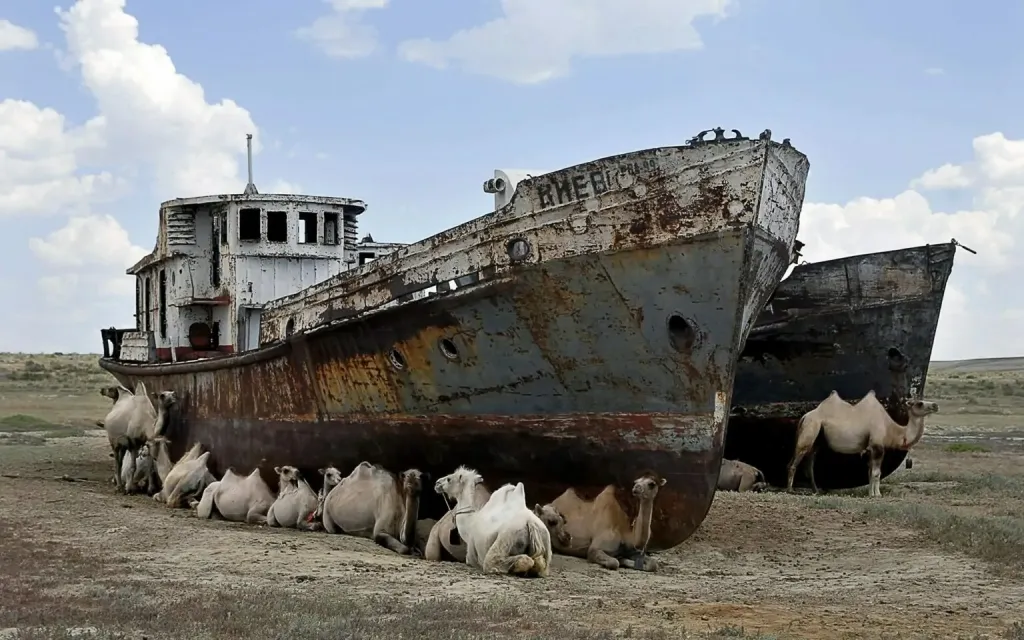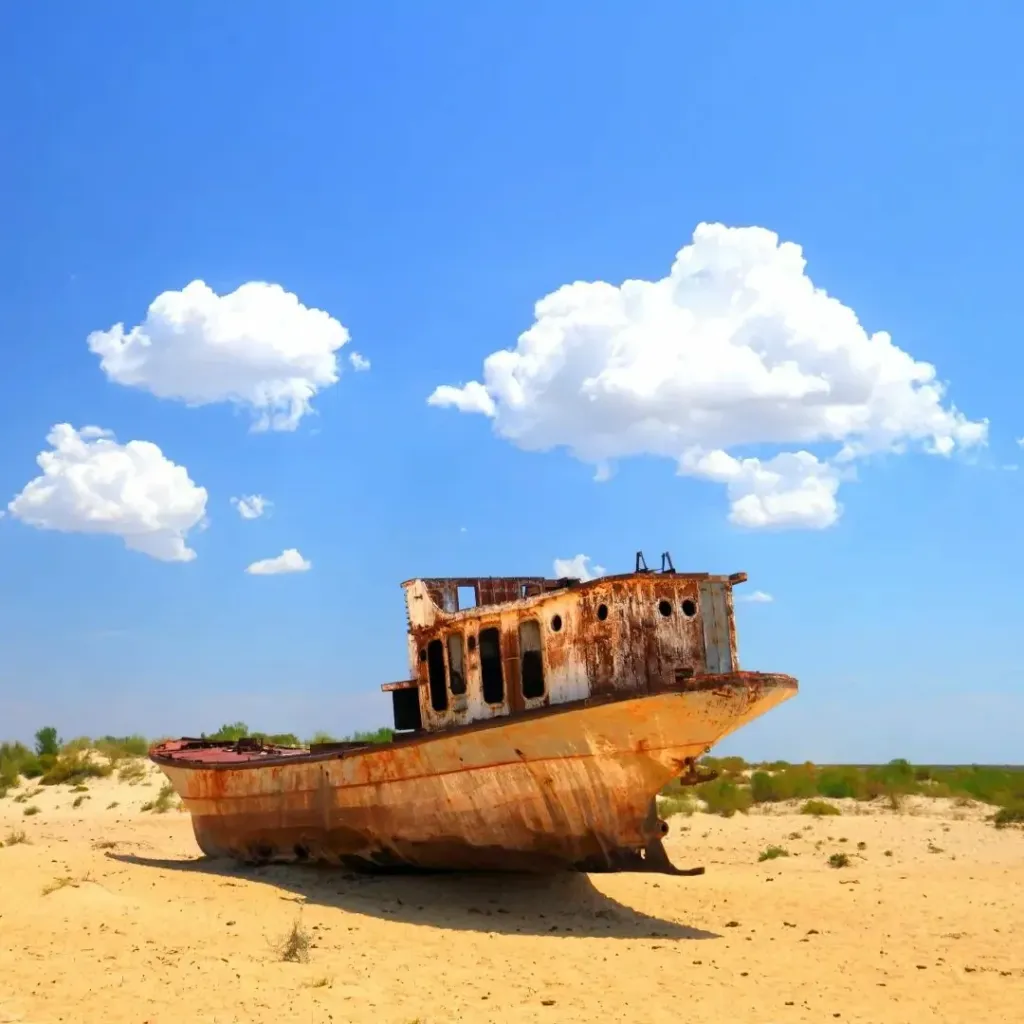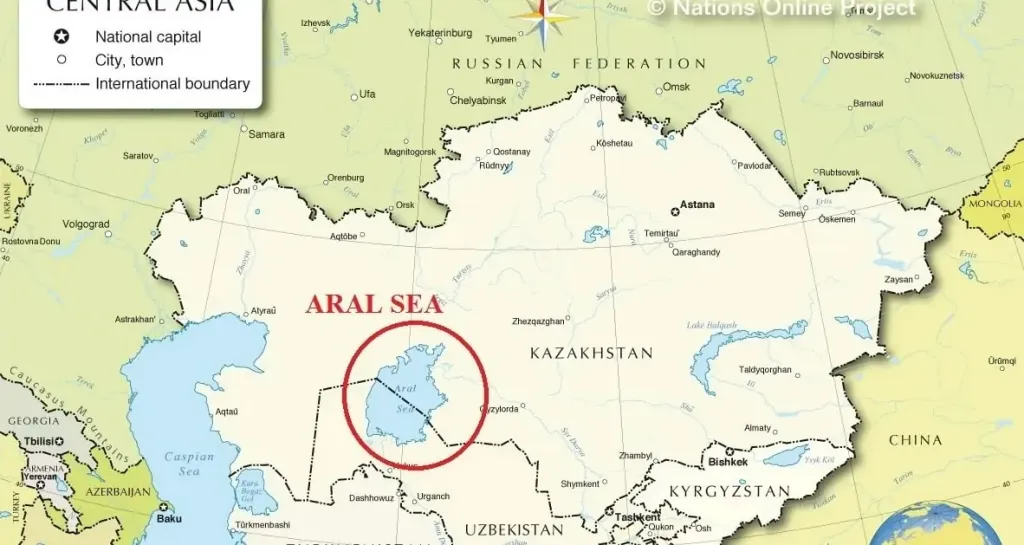The Aral Sea, once a marvel of nature, nestled between Kazakhstan and Uzbekistan in Central Asia, has undergone a profound and tragic transformation over the last few decades. Once spanning a colossal 26,000 square miles, it proudly stood as the world’s fourth-largest inland water body. This article delves into the inexplicable disappearance of the Aral Sea and the human actions that led to this ecological catastrophe.
The Aral Sea’s Former Glory
The Aral Sea’s beauty and grandeur captured the imagination of great conquerors like Alexander the Great, who marveled at its vastness. It was a breathtaking sight, teeming with life and a vital resource for the communities that surrounded it.

Human Actions and Environmental Impact
The downfall of the Aral Sea can be traced back to human actions. In the 1960s, the Soviet government decided to divert the waters of the two rivers that fed the Aral Sea to irrigate vast cotton and rice crops. Little did they know that this decision would set off a chain of events that would lead to the sea’s rapid decline.
The Devastation Unleashed
By the 1980s, the Aral Sea had lost half of its former volume. Thriving villages that relied on fishing were on the brink of collapse. What was once a vibrant port scene now lay in ruins, a haunting spectacle of rusted hulls and crumbling infrastructure. The Aral Sea had transformed from a symbol of life to a tragedy, earning it the eerie nickname “Desert of Ghost Ships.”

Ecological Ramifications
The disappearance of the Aral Sea had far-reaching ecological consequences. As the seabed was exposed, it released harmful dust laden with salt, insecticides, and other toxic compounds into the atmosphere. This led to a surge in health issues among the population, including increased cancer cases and respiratory diseases.
Efforts to Restore
Efforts have been made to restore the Aral Sea over the years, with some success. The construction of a dam on the Kazakh side of the sea has slightly increased water levels in the northern half. However, the southern portion remains desolate and unlikely to recover.

A Cautionary Tale
The story of the Aral Sea serves as a heartbreaking reminder of the irreversible environmental damage caused by human activities. It underscores the far-reaching and long-lasting consequences of our decisions, urging us to act more responsibly on this fragile planet we call home.